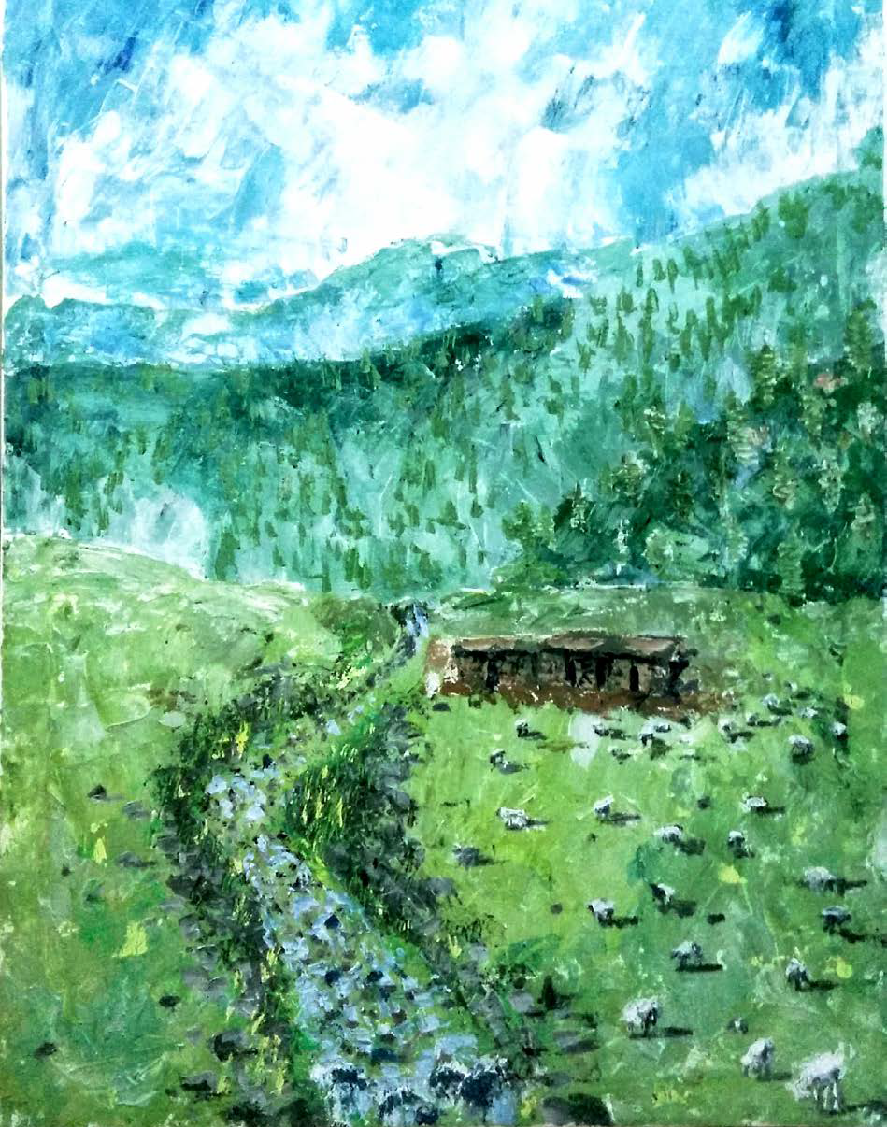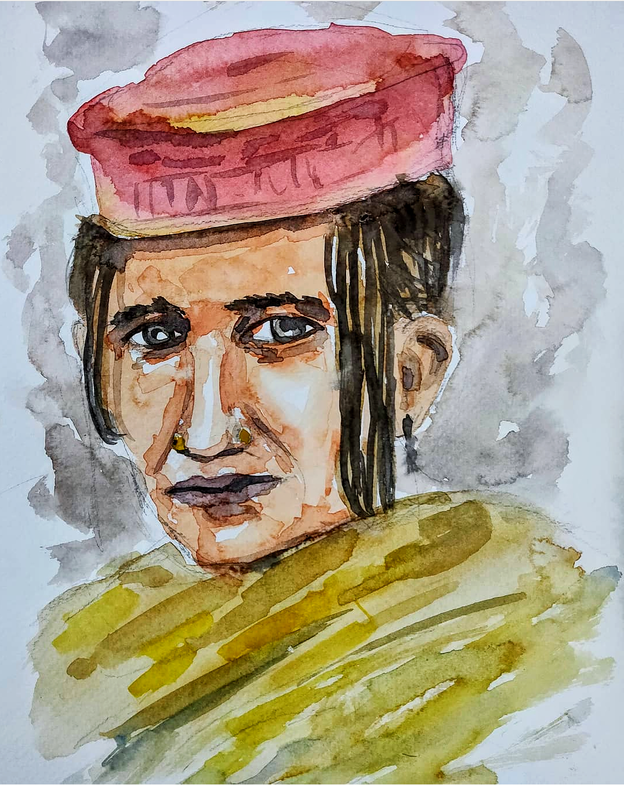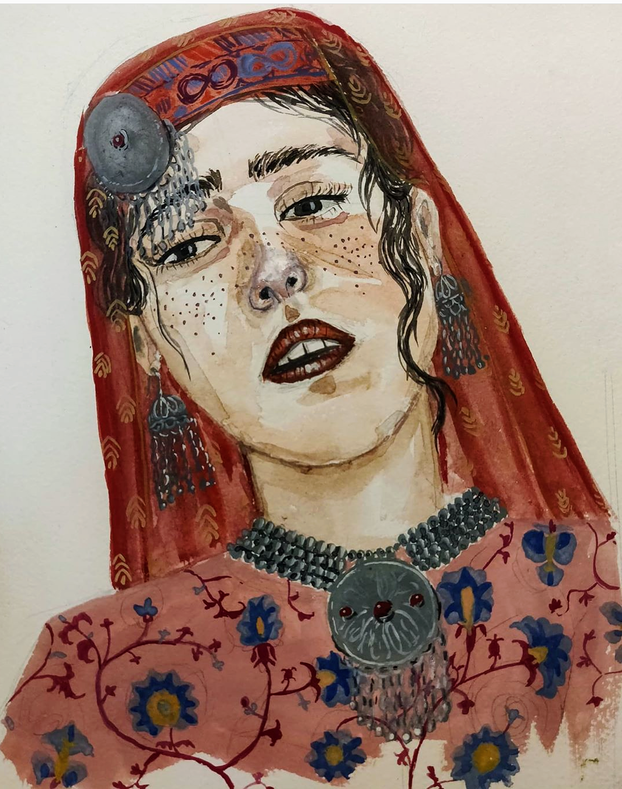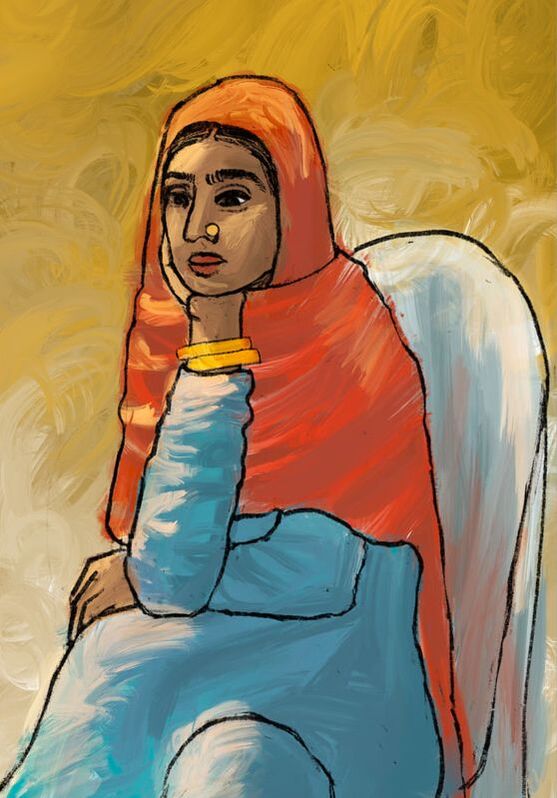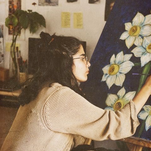An Artistic Glimpse into the Lives of Gujjar/Bakkerwal Women
by
Sumairha Mumtaz Choudhary
Bakkerwals and Gujjar are pastoralist communities from Jammu and Kashmir who exhibit a nomadic lifestyle, spending their summer in the high-altitude meadows of the Himalayas and winter in the plains of their villages. They migrate in search of better pasture for their livestock and spend a significant time of the year migrating and living in highland meadows. But due to reasons like increasing traffic and changing cultural practices, migration is now becoming challenging for the community. However, the yearning for their ancestral highland pastures keeps them going back every year. Their life in the highland compensates for all inconvenience faced in the process of reaching there. Living in the open amid pristine nature with their cattle, satiated qualifies as an ecstasy for the community. The community exhibits strong compassion towards nature, which is evident by how they are so cautious not to harvest more than they need.
While migrating, dera (a group of families who migrate together) cannot function unless all its members, irrespective of their gender or age, contribute to its operations. And unlike a conventional job, the duties have to be performed like clockwork from dusk to dawn (and sometimes between the two). Bakkerwali and Gujjar women undertake daily chores along with childcare seemingly effortlessly. Some duties are gender-specific like childcare, cooking, fetching water, etc., and some are more standard like packing and unpacking, bringing wood, milking, or tending to cattle, etc. Being always on the move, the idea of home is unconventional; thus, the seemingly-conventionality in the chores is quite not so. Unlike a modern, well-equipped kitchen, cooking under the open sky, exposed to all-natural (and human-made elements) with a few utensils is a different ball game altogether; so is life in the bare and exposed. Some traditions root from their nomadic life, like the idiosyncratic braids of Gujri/Bakkerwali women, which are made to reduce time spent maintaining the hair. Therefore, hair is braided in the shape of thin, long braids, and honey wax is applied over the braids so that they stay braided longer without hair-damage.
In dhoks (highland summer pastures), women are busy with the chores throughout the day. They get together and chat while fetching water, wood, or tending cattle. During the foggy days, they sing folk songs collecting wild vegetables, herbs, and fruits. Being hardworking and bold are prerequisite qualities for practicing a nomadic lifestyle. Women are incredibly bold when it comes to interactions and transactions, even with people not belonging to the community. This boldness seems to have made a permanent impression on their faces and personalities. However, having a nomadic lifestyle denies women access to primary education and health-care. Women suffer from health issues like anemia, sanitary infections, etc., leading to many complications like maternal deaths, chronic illness, etc.
While migrating, dera (a group of families who migrate together) cannot function unless all its members, irrespective of their gender or age, contribute to its operations. And unlike a conventional job, the duties have to be performed like clockwork from dusk to dawn (and sometimes between the two). Bakkerwali and Gujjar women undertake daily chores along with childcare seemingly effortlessly. Some duties are gender-specific like childcare, cooking, fetching water, etc., and some are more standard like packing and unpacking, bringing wood, milking, or tending to cattle, etc. Being always on the move, the idea of home is unconventional; thus, the seemingly-conventionality in the chores is quite not so. Unlike a modern, well-equipped kitchen, cooking under the open sky, exposed to all-natural (and human-made elements) with a few utensils is a different ball game altogether; so is life in the bare and exposed. Some traditions root from their nomadic life, like the idiosyncratic braids of Gujri/Bakkerwali women, which are made to reduce time spent maintaining the hair. Therefore, hair is braided in the shape of thin, long braids, and honey wax is applied over the braids so that they stay braided longer without hair-damage.
In dhoks (highland summer pastures), women are busy with the chores throughout the day. They get together and chat while fetching water, wood, or tending cattle. During the foggy days, they sing folk songs collecting wild vegetables, herbs, and fruits. Being hardworking and bold are prerequisite qualities for practicing a nomadic lifestyle. Women are incredibly bold when it comes to interactions and transactions, even with people not belonging to the community. This boldness seems to have made a permanent impression on their faces and personalities. However, having a nomadic lifestyle denies women access to primary education and health-care. Women suffer from health issues like anemia, sanitary infections, etc., leading to many complications like maternal deaths, chronic illness, etc.
With time it is becoming increasingly difficult to practice a migratory lifestyle; the influx of roads, shrinking pastures, and the lack of government sensitivity to the community contribute to a loss of migratory practices.
Bakkerwal and Gujjar communities spend a nomadic lifestyle tending their sheep and cattle in the meadows during the summers while winters in the plains of Uttrakhand, Himachal, and Jammu and Kashmir. During herding the highland meadows are frequently engulfed by the clouds, mist, and fog during monsoons, making the sheep and cattle indistinguishable in the mountains. In those demanding situations, the loud calling, long whistles, and bakkerwali kutta (Bakkerwali Dog) come for aid to locate them. Just another day in the life of Bakkerwal/Gujjars, Shepherding during fog. Watercolors on watercolor paper.
|
During their stay in Highland pasture, Bakkerwal and Gujjar build tara (summer house in pastures) from the available resources such as mud, wood, and stones, maintained and repaired each year by the family. They come together to make these houses, one house at a time; the construction time is festive with tea, snacks, and conversations. The tara is usually located in the middle of long pastures surrounded by mountains. As the cattle spread across these beautiful pastures in pristine settings, grazing, the family goes on with the daily rhythms of life. An impression of tara (summer houses) in dhok (highland summer pastures). Oil on canvas.
|
Women typically wear their traditional attire during their daily lives. The most striking element in their clothing is their traditional skullcap called “topi''. With time, the practice of wearing topi is associated with elderly women as young women no longer wear it. Traditional attire Gujjar/Bakkerwal Women
The toddlers keep close to their mother, clinging to her, even in the migration of Kafila (caravan) from one place to another. The mother carries her child and sometimes breastfeeds on the go. Breastfeeding in public was not a taboo in the community until recently. A woman tending to her child during migration, Digital sketch.
The Cattle and the sheep are part of the Bakkerwal and Gujjar Family. (1) An older woman grazing her buffalo, Digital Sketch. (2) Girl holding sheep, Watercolors on watercolor paper.
Hair braiding in dhok sitting on peeda (small carpet) in the pastures. Braiding reduces the time spent on hair grooming and keeps the hair safe. Women braiding hair in dhok sitting on peeda, Digital painting.
While migrating women lead the way with their possessions on horseback and their children to settle the camp for the night. Under the open sky, as the fireflies paint the forest by their mesmerizing trails, the women of the family serve food beside the warmth of the bonfire. An impression of a migrating dera, Oil on canvas
A nomadic lifestyle makes women physically strong and independent. They play an active role in the daily chores in the Dera and activities within the tribe. However, with a lack of education, their understanding of the world remains limited. They also suffer due to a lack of healthcare facilities.
(1) Woman with a gaze. Oil on canvas, (2) Woman in the modern marriage function, Digital sketch
(1) Woman with a gaze. Oil on canvas, (2) Woman in the modern marriage function, Digital sketch
|
28/11/2020
|
Explore I Share
|
Sumairha Mumtaz Choudhary | Artist |Architect |
She is an architect, artist, designer, and cultural enthusiast hailing from the Gujjar community of Jammu and Kashmir. She developed an interest in her own culture while studying in Delhi. Her paintings on Gujjar/Bakkerwal community have been exhibited in India Habitat Center, New Delhi. Currently, she is researching the vernacular settlements of the community. She posts her paintings and sketches at sumtaz on Instagram.
|



